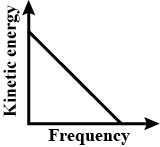
Photon Energy Formula
Photon Energy Formula, In the realm of physics and quantum mechanics, the concept of photon energy plays a crucial role. Photons are elementary particles of light and exhibit both wave-like and particle-like properties. Understanding the energy associated with photons is essential in various scientific applications. This article delves into the Photon Energy Formula and its significance.Photon Energy
Photons are quantized packets of energy, and their energy is directly related to their frequency and wavelength. The Photon Energy (E) can be calculated using the formula:E = h *f
Where:
- E is the photon energy. - h is Planck's constant (approximately 6.626 x 10^-34 Js). - f is the frequency of the photon.Also Check - Escape Speed Formula
Formula of Photon Energy
Let's break down the components of the formula:Planck's Constant (h)
Planck's constant is a fundamental constant of nature and is approximately equal to 6.626 x 10^-34 joule-seconds. It relates the energy of a photon to its frequency.Frequency (f)
Frequency refers to the number of oscillations or cycles per second. In the context of photons, it represents the number of waves of light per second. It is typically measured in Hertz (Hz).Energy of Photon Formula in Electronvolts (eV)
In addition to the joule-based formula, photon energy can also be expressed in electronvolts (eV), a more common unit in atomic and molecular physics. The conversion between joules and electronvolts is straightforward: 1 eV = 1.602 x 10^-19 joules Using this conversion factor, the photon energy formula in eV is:E(eV) = (h f) / (1.602 x 10^-19)
Also Check - Position Formula
Photon Wavelength Formula
The wavelength of a photon (λ) is inversely proportional to its frequency. You can calculate the wavelength using the formula:λ = c / f
Where:
- λ is the wavelength. - c is the speed of light (approximately 3 x 10^8 meters per second). - f is the frequency of the photon. Kinetic Energy of Photon Formula Photons can also exhibit kinetic energy, especially in situations like the photoelectric effect. The kinetic energy of a photon (K) can be determined using:K = E - φ
Where:
- K is the kinetic energy of the photon. - E is the photon energy. - φ is the work function of the material.Also Check - Percent Error Formula
Kinetic Energy vs Frequency Graph
Understanding the relationship between the kinetic energy of emitted electrons and the frequency of incident photons is crucial in the study of photoelectric effect phenomena. We can represent this relationship graphically.
Photon Applications
1. Photoelectric Effect: The photoelectric effect is a phenomenon where electrons are ejected from a material when it is exposed to light, specifically when photons strike its surface. This effect is used in devices like photodiodes and photomultiplier tubes for light detection and sensing.
2. Semiconductor Physics: In semiconductor devices like solar cells and LEDs (Light Emitting Diodes), the energy of photons is harnessed to generate electricity (in the case of solar cells) or emit light (in the case of LEDs).
3. Quantum Optics : Photon energy is crucial in the field of quantum optics, where researchers manipulate individual photons for various applications such as quantum computing, quantum cryptography, and quantum teleportation.
4. Lasers and Spectroscopy: Lasers operate based on the amplification of photon energy. Spectroscopy, which is used in analytical chemistry and astronomy, relies on the precise measurement of the energy levels of photons to analyze materials and celestial objects.5. Medical Imaging and Therapy: Medical imaging techniques like X-rays and MRI (Magnetic Resonance Imaging) use high-energy photons to create detailed images of the human body for diagnostic purposes. Radiation therapy also utilizes photons to treat cancerous tumors.
6. Telecommunications: Fiber-optic communication systems use photons to transmit information over long distances. The energy of photons ensures efficient and high-speed data transmission.
7. Quantum Information Processing: In the field of quantum computing, quantum bits or qubits are typically represented by photons. Photon energy plays a vital role in the manipulation and transmission of quantum information.
8. Environmental Monitoring: Photons are used in remote sensing and environmental monitoring, such as studying Earth's atmosphere and climate change through satellite-based instruments that measure photon energy from different parts of the electromagnetic spectrum.
These applications highlight the diverse and significant roles that photon energy plays in various scientific, technological, and medical fields. Photon energy's ability to interact with matter and carry information makes it a fundamental aspect of modern technology and research.Solved Examples on Photon Energy Formula
Example 1:
Problem: Calculate the energy of a photon with a frequency of 5 x 10^14 Hz.Solution:
- Given frequency, f = 5 x 10^14 Hz. - Using the photon energy formula, E = h * f. - Plug in the values: E = (6.626 x 10^-34 J·s) * (5 x 10^14 Hz) = 3.313 x 10^-19 Joules.Example 2:
Problem: Convert the energy calculated in Example 1 to electronvolts (eV).Solution:
- Given energy in joules, E = 3.313 x 10^-19 J. - Use the conversion factor: 1 eV = 1.602 x 10^-19 J. - Divide the energy in joules by the conversion factor: E(eV) = (3.313 x 10^-19 J) / (1.602 x 10^-19 J/eV) ≈ 2.07 eV.Example 3:
Problem: Calculate the wavelength of a photon with energy 3 eV.Solution:
- Given photon energy, E(eV) = 3 eV. - Convert the energy to joules: E = 3 eV * 1.602 x 10^-19 J/eV ≈ 4.806 x 10^-19 J. - Use the wavelength formula, λ = c / f. - λ = (3 x 10^8 m/s) / (E / h), where h is Planck's constant. - Plug in values: λ ≈ (3 x 10^8 m/s) / (4.806 x 10^-19 J / 6.626 x 10^-34 J·s) ≈ 4.497 x 10^-7 meters or 449.7 nm.Example 4:
Problem: Calculate the kinetic energy of a photon with an energy of 4 eV striking a material with a work function of 2 eV.Solution:
- Given photon energy, E(eV) = 4 eV. - Given work function, φ(eV) = 2 eV. - Use the kinetic energy formula, K = E - φ. - K = (4 eV) - (2 eV) = 2 eV.Photon Energy Formula FAQs
What is a photon?
How is photon energy calculated?
What is Planck's constant?
How do you convert between joules and electronvolts for photon energy?










